UK benefits trends 2021 research provides insights into shifting priorities
Aon’s UK Benefits and Trends Survey 2021 has some interesting insights for employers. This is its 11th Benefits and Trends survey and the authors highlight it has had its highest ever number of responses. Perhaps, they suggest, this is a sign of employers who are keen to help build up a comprehensive picture of how companies are faring overall. As is always the aim of this kind of research, but perhaps now more than ever, these collective insights can help generate ideas and inspiration for companies as they navigate their paths through what are now hopefully the final few months of the pandemic emergency and set themselves on course for the future.
The top two contributors in terms of sectors were Financial Institutions and Technology and Communications at 16% and 15% respectively but the total responses received came from a broad range of industries. Over a quarter of respondents had 1001-5000 employees and 19% had upwards of 5,000.
Employee expectations have shifted significantly
One of the most clear-cut answers in the survey was in response to the question “Do you think employees’ expectations of their work experience are changing?” – with a resounding ‘yes’ from 91% of respondents.
Of those respondents, the standout expectations about what employees now want relates to greater levels of agile/home working (95%), seeking more flexible working hours (93%), and having an improved approach to diversity and inclusion (70%). Some way behind these, but still in the top four, comes the desire to see employers with more impactful environmental and sustainability policies (51%).
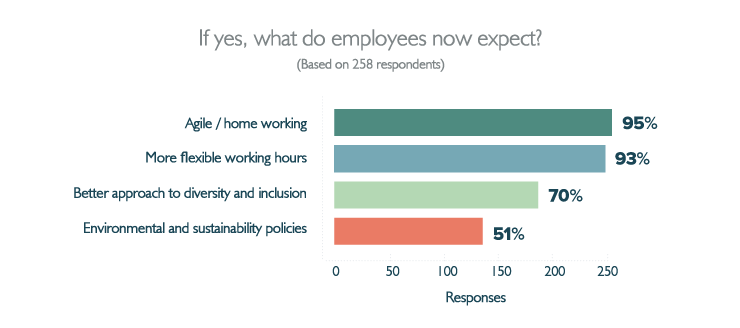
The research suggests that at a personal level, employees want a more flexible working model but it’s not just their own circumstances that are their priorities; many employees are looking to their employers to actively step up and meet their responsibilities when it comes to global and social issues too.
Perhaps unsurprising, many of the perks that are more dependent on a presence inside a physical workplace, such as free snacks and drinks or games (like table tennis and pool), are way down the list. It seems that employers are preparing for a world where employees seek greater flexibility over where and the way they carry out their work, and who want to work for companies that are actively engaged with ethical priorities.
The importance of communications and engagement is growing
For 86% of respondents, communications have become an even greater priority than they were before the pandemic. That’s perhaps not surprising – the fact that large numbers of employees suddenly had to work remotely will have led many companies to rethink their approach to communications.
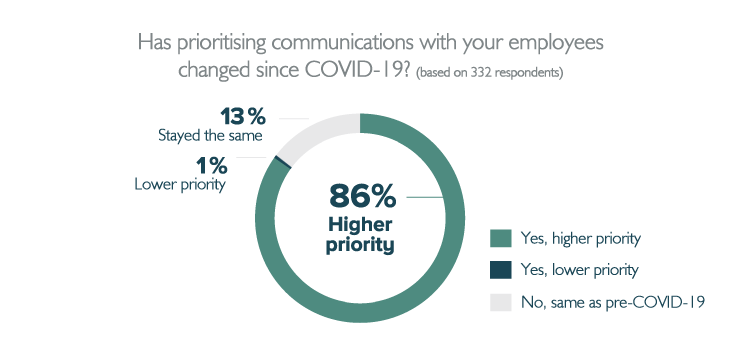
The research however does indicate that employers have more work to do when it comes to two-way communications. It’s interesting, but maybe rather surprising, to see the research reveal that 27% of respondents did not do any form of research or listening to employees to enable them to understand their needs.
Of those that do, just over half (54%) used questionnaires and 31% used regular pulse surveys. There is an opportunity here for employers to think more imaginatively about all of the potential communication channels they could use to give their employees more of a voice.
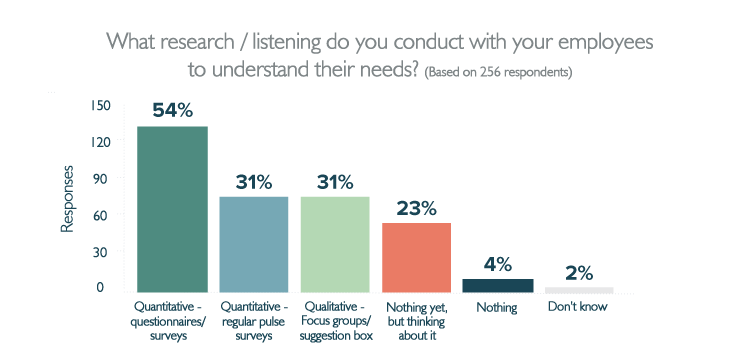
It’s more vital than ever that employees feel connected and heard, especially if the trend towards increased levels of remote working develops as many are anticipating. As the report says, companies need to put an informed understanding of how employees think and feel at the heart of their engagement strategy.
Mental health and wellbeing are at the top of the employer priority list
When it comes to the areas that companies have been placing most emphasis on since the start of the pandemic, mental health and wellbeing are at the top of the list.
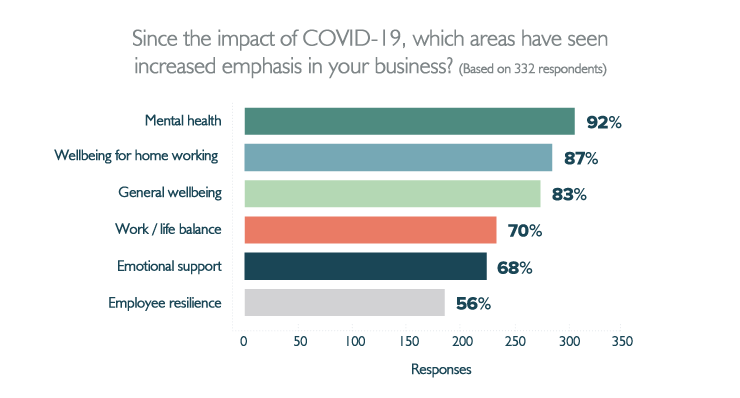
Mental health is a major priority for 92% of employers. Just under that, at 87%, is wellbeing for homeworkers. And 83% of employers rank general wellbeing as an area that has increased emphasis on it. There are signs of a more targeted response too, with some employers prioritizing supporting development of employee resilience (56%). Areas that might traditionally have been expected to appear higher up on the list are now quite low down – like career engagement at just 17% – indicating quite how dramatically employers have had to rethink where their focus should be.
Read more: 10 companies getting workplace wellbeing right
It’s encouraging to see companies recognizing the significance of wellbeing and mental health, and increasing numbers giving it the prominence that many would argue it has desperately needed even since way before the pandemic. 44% of respondents have a formalized health and wellbeing strategy in place, and 33% are working on one and aiming to implement it within 12 to 18 months (from the time they were responding to the survey). This is clearly a positive move: companies that are spending on wellbeing improvements but in the absence of a targeted strategy may not fully capitalize on all the benefits. The report does highlight the need for such a strategy to take into account all five pillars of wellbeing however: emotional/ mental, physical, financial, career and social.
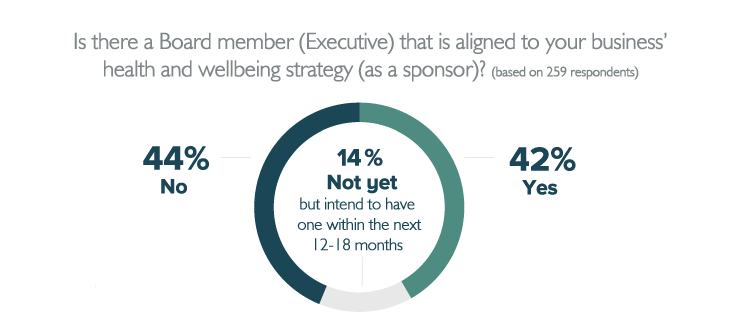
The research found that just 9% of employers are currently actively measuring the return on investment from their wellbeing programmes. A similar percentage are using data to guide their strategy – it seems there is scope for employers to take the opportunity to create a far more targeted approach. At the same time, with 42% of companies having a board sponsor for wellbeing, a greater level of board support could be another positive step forward.
Technology can act as an enabler
Wellbeing and communication were already two topics on the agenda of many companies, but the pandemic has rapidly pushed them up the employer priority list. There are many positive signs that companies are taking steps to meet these challenges.
That includes looking to technology to play a greater role as an enabler; according to the report, there’s been a 48% increase in its use. Communication methods are increasingly becoming more in tune with the ones employees choose to use in their personal lives too. That in turn could have a really positive influence on engagement, enabling employers to enhance the way they communicate by listening as well as talking, and ensuring employee needs and preferences are being heard and addressed.


 30 ideas to help a new starter in their first week
30 ideas to help a new starter in their first week
 The value of external feedback in the workplace
The value of external feedback in the workplace
 Expand the power of recognition with Partner Appreciation
Expand the power of recognition with Partner Appreciation